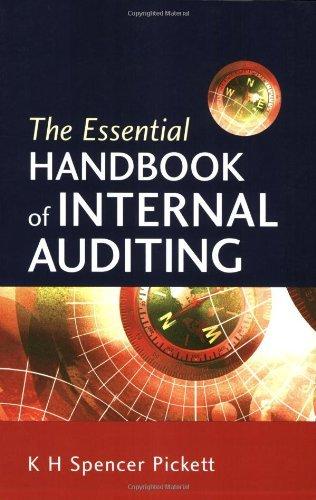Question
DQ 1: The following are various management assertions related to sales and account receivable. Required: For each assertion, indicate whether it is an assertion about
DQ 1:
The following are various management assertions related to sales and account receivable.
Required:
- For each assertion, indicate whether it is an assertion about classes of transactions and events or an assertion about account balances.
- Indicate the name of the assertion made by management.
| MANAGEMENT ASSERTION | CATEGORY OF MANAGEMENT ASSERTION | NAME OF ASSERTION |
| a. Recorded accounts receivable exist. |
|
|
| b. Disclosures related to sales are relevant and understandable. |
|
|
| c. Recorded sales transactions have occurred. |
|
|
| d. There are no liens or other restrictions on accounts receivable. |
|
|
| e. All sales transactions have been recorded. |
|
|
| f. Receivables are appropriately classified as to trade and other receivables in the financial statements and are clearly described. |
|
|
| g. Sales transactions have been recorded in the proper period. |
|
|
| h. Accounts receivable are recorded at the correct amounts. |
|
|
| i. Sales transactions have been recorded in the appropriate accounts. |
|
|
| j. All required disclosures about accounts receivables have been made. |
|
|
| k. All accounts receivable have been recorded. |
|
|
| l. Disclosures related to receivables are at the correct amounts. |
|
|
| m. Sales transactions have been recorded at the correct amounts. |
|
|
DQ 2:
Below are 12 audit procedures. Classify each procedure according to the following types of audit evidence: (1) physical examination, (2) confirmation, (3) inspection, (4) observation, (5) inquiry of the client, (6) recalculation, (7) reperformance, and (8) analytical procedure.
| Type of Evidence | Audit Procedures |
|
| 1. Watch client employees count inventory to determine whether company procedures are being followed. |
|
| 2. Count inventory items and record the amount in the audit files. |
|
| 3. Trace postings from the sales journal to the general ledger accounts. |
|
| 4. Calculate the ratio of cost of goods sold to sales as a test of overall reasonableness of gross margin relative to the preceding year. |
|
| 5. Obtain information about the client's internal controls by asking questions of client personnel. |
|
| 6. Trace column totals from the cash disbursements journal to the general ledger. |
|
| 7. Examine a piece of equipment to make sure a recent purchase of equipment was actually received and is in operation. |
|
| 8. Review the total of repairs and maintenance for each month to determine whether any month's total was unusually large. |
|
| 9. Compare vendor names and amounts on purchase invoices with entries in the purchases journal. |
|
| 10. Foot entries in the sales journal to determine whether they were correctly totaled by the client. |
|
| 11. Make a surprise count of petty cash to verify that the amount of the petty cash fund is intact. |
|
| 12. Obtain a written statement from the client's bank stating the client's year-end balance on deposit. |
DQ 3:
The following are various audit procedures performed to satisfy specific transaction-related audit objectives as discussed in Chapter 6.
Required:
- Identify the type of audit evidence used for each audit procedure.
- Identify the general transaction-related audit objective or objectives satisfied by each audit procedure.
| AUDIT PROCEDURE | TYPE OF AUDIT EVIDENCE | TRANSACTION- RELATED AUDIT OBJECTIVE |
| 1. Trace from receiving reports to vendors invoices and entry in the acquisitions journal. |
|
|
| 2. Add the sales journal for the month of July and trace amounts to the general ledger. |
|
|
| 3. Examine expense voucher packages and related vendors invoices for approval of expense account classification. |
|
|
| 4. Observe opening of cash receipts to determine that cash receipts are promptly deposited and recorded. |
|
|
| 5. Ask the accounts payable clerk about procedures for verifying prices, quantities, and extensions on vendors invoices. |
|
|
| 6. Vouch entries in sales journal to sales invoices and related shipping documents. |
|
|
| 7. Examine the footnotes about the companys policies for recording revenue transactions to determine whether the disclosures are reasonable. |
|
|
Step by Step Solution
There are 3 Steps involved in it
Step: 1

Get Instant Access to Expert-Tailored Solutions
See step-by-step solutions with expert insights and AI powered tools for academic success
Step: 2

Step: 3

Ace Your Homework with AI
Get the answers you need in no time with our AI-driven, step-by-step assistance
Get Started


